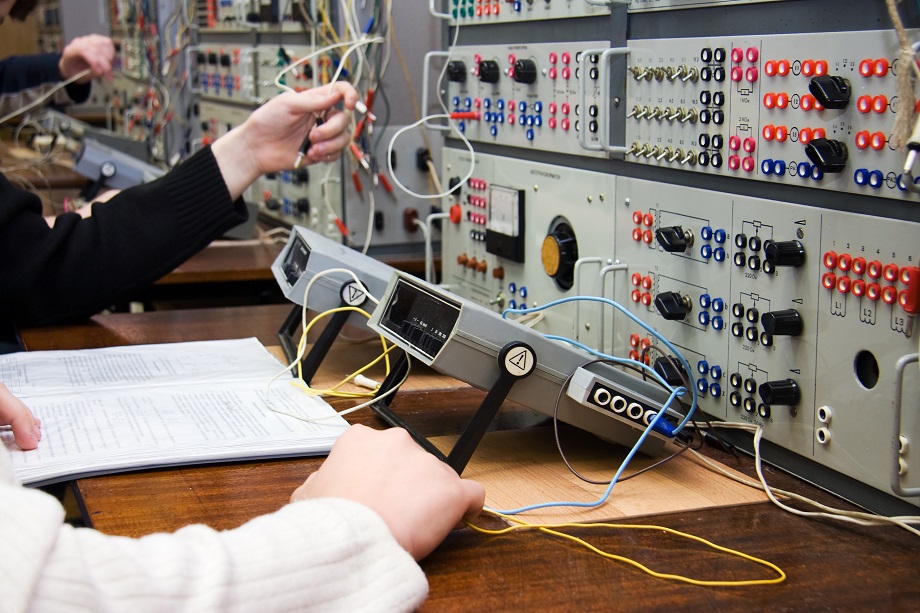
Trade schools and technical colleges have traditionally used hands-on learning as their main thrust for training and teaching students. Although there are some lectures involved in this approach, most learning takes place in practical and real-world simulations.
Hands-on training may be considered a universal approach to developing the skills needed for the trades. We will look at how its components equip students with the skills that employers value.
Hands-On Learning Is An Age-Old Approach That Still Works
 Long ago, job training was essentially a one-on-one relationship between a teacher and a student. The craftsperson whether a man or a woman was an expert in the field. He or she would pass on the knowledge and skills to students for success in a particular trade.
Long ago, job training was essentially a one-on-one relationship between a teacher and a student. The craftsperson whether a man or a woman was an expert in the field. He or she would pass on the knowledge and skills to students for success in a particular trade.
We call this approach to training apprenticeships and students learn very quickly if they are cut out for the job. There may be one or more apprentices involved at the same time. Each progresses at their own rate to ensure they learn each skill well before moving on to the next.
Apprenticeships did not pass students along just because they spent a lot of time in training. Neither did they graduate with a barely-passing grade. They learned the trade well even if it meant some students stayed in training much longer than others to “get it right.”
How Hands-On Learning Develops Skills
Students in liberal arts colleges typically learn by listening to professors in classroom lectures. Listening is just one way to learn while most of us prefer learning in one or more different ways. This is the beauty of hands-on learning because it provides training in these several approaches:
- Visual Learning allows students who prefer seeing what takes place to duplicate the instructor’s actions. These learners like to see graphical depictions, real objects, and body language.
- Auditory Learning lets students who prefer to listen follow along with the spoken training. They learn even more when they can discuss what they hear.
- Reading and Writing learners prefer reading material, taking notes, and reviewing them.
- Kinesthetic learners learn best when they can try things out and put things into practice such as wiring a room.
- Multimodal students do not have just one preferred way of learning. They use a combination of learning styles.
The beauty of hands-on learning is that it touches on all of these learning styles in practice labs, classroom experiences, field trips, and internships/externships. Students develop skills by practicing them instead of just hearing or reading about them. They practice on real-world devices, equipment, and processes.
| “Hands-on training may be considered a universal approach for developing the skills needed for the trades.” |
Hands-On Learning Develops Careers
Little by little, trade and technical students put together skills and knowledge for specific jobs and their careers. Hands-on learning provides students with opportunities to safely make mistakes before they start jobs. They practice critical thinking skills, hand and hand-and-eye coordination, and put their acquired knowledge to use.
With hands-on learning, students are better prepared to go to work. They learn what they are doing right and what they are doing wrong. Students learn how to fix issues or avoid making mistakes in the future in school and at work. The more they practice the better they become at recognizing what tasks they need to perform and how to do them better.
Hands-On Learning in Groups
 Often, learning does not take place in isolation but in small groups. Other ways students learn in groups in trade and technical schools include:
Often, learning does not take place in isolation but in small groups. Other ways students learn in groups in trade and technical schools include:
- One student may emerge as an informal leader to help group members understand
- Students can move around, discuss ideas, interact, and engage in the learning objective
- They are more motivated to become immersed in the functional points of their tasks
- Group work helps students retain and later recall what they learned more easily
- Working together may generate competition to do the work correctly
Successful group work in school can transfer to improved teamwork on the job.
Hands-On Learning at a Technical College
Instructors primarily teach with hands-on techniques they have found to be successful at technical colleges and trade schools. Most instructors teach what they learned from their actual work experiences in the past. Some work in their fields during summer breaks or as hobbies. Students benefit from this expertise and experience.
The best technical colleges and trade schools send faculty members to seminars and classes to help them upgrade their skills and become better teachers. The students ultimately benefit and grow as their instructors grow. Call us today at (877) 591-1070 for more information about all our programs!
For more information about graduation rates, the median debt of students who completed the program, and other important information, please visit our website: https://www.iticollege.edu/disclosures




